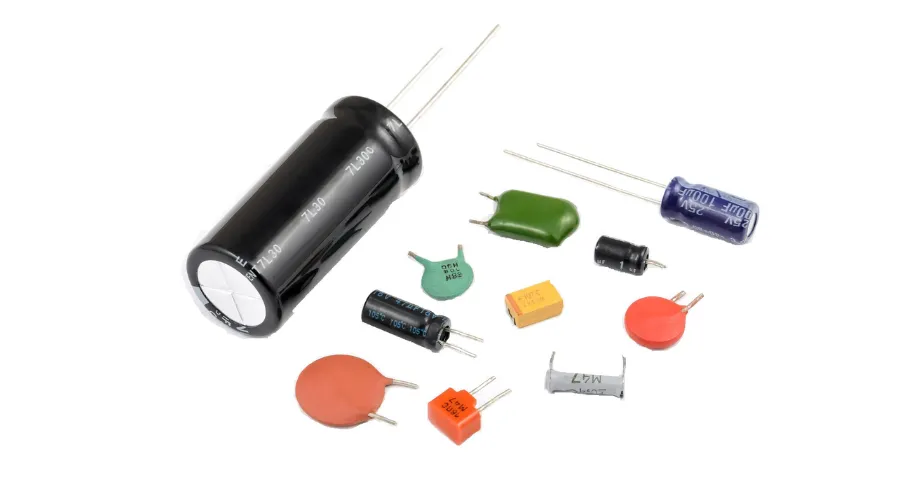
When delving into the intricate world of electronics, one cannot escape encountering resistors, those inconspicuous yet crucial components that play a fundamental role in controlling the flow of electrical current within a circuit. In this blog post, we will embark on a journey to demystify resistors, exploring their types, functions, and the crucial role they play in shaping the behavior of electronic circuits.
The Anatomy of a Resistor
Before we delve into the nuances of resistors, it’s essential to understand their basic structure. A resistor is a passive two-terminal electrical component that resists the flow of electric current. It consists of a resistive element made from materials with specific electrical properties, and this element is often wound into a coil or deposited on a substrate.
Resistors are available in various shapes and sizes, each designed to serve specific purposes within electronic circuits. The most common types include fixed resistors, variable resistors, and specialty resistors.
Fixed Resistors: The Foundation of Circuit Design
Fixed resistors have a predetermined resistance value that cannot be adjusted. They are the foundation of circuit design, providing a stable resistance to control the flow of current. The resistance value is usually marked with color bands, employing a color code system that allows engineers and hobbyists to quickly identify the resistor’s specifications.
Types of Resistors
Resistors come in a variety of types, each tailored for specific applications. Let’s explore some common resistor types and their unique characteristics.
1. Carbon Film Resistors: The Workhorses of Electronics
Carbon film resistors are among the most widely used resistors in electronic circuits. They consist of a ceramic rod coated with a thin film of carbon, providing a reliable and cost-effective solution for many applications. These resistors are known for their stability and precision, making them the workhorses of electronics.
2. Variable Resistors: Fine-Tuning Electrical Systems
Unlike fixed resistors, variable resistors, also known as potentiometers or rheostats, allow users to adjust the resistance value manually. This feature is invaluable for fine-tuning electrical systems, such as volume controls in audio equipment or brightness controls in lighting systems. Variable resistors come in various forms, including rotary and slide potentiometers, offering flexibility in design.
3. Metal Film Resistors: Precision and Stability
Metal film resistors are prized for their precision and stability. They feature a thin metal film as the resistive element, providing accurate resistance values with low tolerance. This makes them ideal for applications where precise resistance values are critical, such as in high-precision measuring instruments and audio equipment.
The Role of Resistors in Electronic Circuits
Now that we have a basic understanding of resistor types, let’s explore the crucial role these components play in electronic circuits.
1. Current Limiting: Safeguarding Components
One of the primary functions of resistors is current limiting. By impeding the flow of electric current, resistors prevent other components in the circuit from receiving excessive current, safeguarding them from damage. This is particularly crucial in LED circuits, where resistors ensure that the LEDs receive the optimal current to operate within their specified parameters.
2. Voltage Division: Tailoring Electrical Potential
Resistors play a pivotal role in voltage division within a circuit. By strategically placing resistors in a circuit, engineers can control the voltage at specific points, ensuring that electronic components receive the appropriate electrical potential. This is vital in scenarios where precise voltage levels are required for the proper functioning of integrated circuits and other sensitive components.
3. Signal Conditioning: Shaping Electrical Signals
In signal processing circuits, resistors are used for signal conditioning. They shape electrical signals, adjusting amplitudes and impedance to match the requirements of subsequent components. This is crucial in audio applications, where resistors help achieve the desired gain and impedance matching for optimal audio quality.
4. Temperature Sensing: Thermistors and Beyond
Resistors also find applications in temperature sensing devices. Thermistors, which are temperature-sensitive resistors, exhibit a change in resistance based on temperature variations. This property is harnessed in temperature sensors and thermal compensation circuits, where resistors play a key role in maintaining stability and accuracy across a range of temperatures.
Selecting the Right Resistor for the Job
Choosing the right resistor for a specific application is crucial for the performance and reliability of electronic circuits. Several factors come into play when selecting resistors, including:
1. Resistance Value: Matching Specifications
The first consideration is the resistance value, which is specified in ohms. It is essential to choose a resistor with the correct resistance value to ensure that the circuit operates as intended. The color code on fixed resistors and the datasheet for specialized resistors provide the necessary information for identification.
2. Power Rating: Avoiding Overheating
Resistors dissipate power in the form of heat, and selecting the appropriate power rating is crucial to prevent overheating. The power rating is typically indicated in watts, and it represents the maximum amount of power the resistor can handle without damage. Choosing a resistor with an adequate power rating is essential for the longevity of the component and the overall circuit.
3. Tolerance: Ensuring Precision
Tolerance refers to the allowable variation from the specified resistance value. It is expressed as a percentage, indicating the range within which the actual resistance can deviate from the nominal value. For applications where precision is paramount, such as in precision measuring instruments, resistors with low tolerance values should be selected.
4. Temperature Coefficient: Adapting to Environmental Changes
The temperature coefficient of a resistor denotes how its resistance changes with temperature. For applications where temperature variations are significant, such as automotive electronics, selecting resistors with a low temperature coefficient ensures stability and accuracy across a wide temperature range.
Looking Ahead: Advanced Resistor Technologies
As technology advances, so does the realm of resistors. Emerging technologies are bringing about innovations in resistor design, addressing the evolving needs of electronic systems.
1. Thin Film and Thick Film Resistors: Precision in Miniature Form
Thin film and thick film resistors represent advancements in resistor technology, offering precision in miniature form factors. Thin film resistors, with their thin ceramic substrate and precise deposition techniques, provide exceptional accuracy in resistance values. Thick film resistors, on the other hand, leverage a thicker film for robustness and cost-effectiveness in high-volume production.
2. Integrated Resistors: Streamlining Circuit Design
Integrated resistors, also known as resistor networks or resistor arrays, consolidate multiple resistors into a single package. This streamlines circuit design, reduces component count, and enhances overall reliability. Integrated resistors find applications in integrated circuits (ICs) and microelectronics, where space optimization is critical.
3. Smart Resistors: Adapting to Dynamic Conditions
The advent of smart technologies has paved the way for the development of smart resistors. These resistors can dynamically adjust their resistance based on external conditions or user input. Such adaptability is particularly beneficial in applications where real-time adjustments are required, such as in adaptive systems and smart grids.
Conclusion: The Resilience of Resistors in Electronic Design
In conclusion, resistors may appear unassuming, but their role in electronic design is indispensable. From current limiting to voltage division and signal conditioning, resistors shape the behavior of circuits, ensuring reliable and efficient operation. As technology progresses, new resistor technologies continue to push the boundaries of what is possible, offering engineers and hobbyists an ever-expanding toolkit for electronic design.
As you embark on your electronic projects, take a moment to appreciate the humble resistor—the unsung hero that quietly enables the seamless flow of electrons, powering the devices that define our modern world. Whether you are a seasoned engineer or an aspiring hobbyist, understanding resistors is key to mastering the art and science of electronic design.









